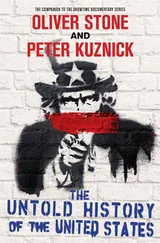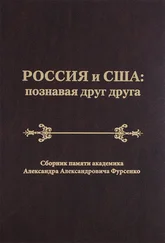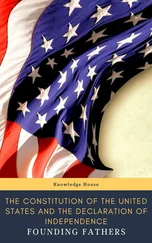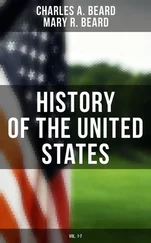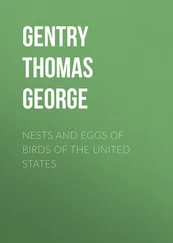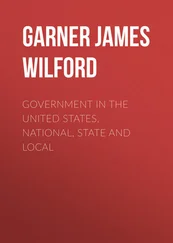This was no small achievement, given the fate of most other Latin American nations: there would be no dictators-for-life, no Somozas or Trujillos in Mexico’s future. Calles, to be sure, did not completely follow his own script. After his term expired, he managed to select and de facto dominate his three de jure successors, with each serving only two years; hence he became known as the behind-the-scenes Jefe Máximo (“Maximum Leader”). In 1934 he fingered Lázaro Cárdenas, and even chose his cabinet for him. But in 1936, Cárdenas finally put Calles’ principles into practice by having him pulled from his home at midnight and bundled off to exile in San Diego.
Cárdenas, a Depression Era president whose 1934–1940 term overlapped two of FDR’s, extended and deepened the Revolutionary legacy: nationalizing oil and railroads; redistributing forty-five million acres of hacienda land to peasants; reviving the system of ejidos (communal land, parcels of which were possessed and worked by individuals, but not owned or sellable by them, forestalling re-accumulation of giant encomienda tracts); expanding social services and secular schools; and supporting strikes that lifted workers’ wages. He also sought to organize core sectors of society into consolidated entities — like the CTM (Confederation of Mexican Workers), a vast collection of unions — with equivalent corporatist bodies for peasants, businessmen, professionals, the military, and others. These were then incorporated into the PNR, which in 1938 he renamed the PRM ( Partido de la Revolución Mexicana or Party of the Mexican Revolution). The political order had been transformed from an elite to a mass-based system. Within a year, the PRM claimed some 4.3 million members.
What the PRM was not was democratic. The new political system concentrated power overwhelmingly in the hands of the party-selected president, reducing the legislative and judicial branches to rubber stamps. Rivalries and disputes were to be settled inside the party, after which a united front was to be presented to the outside world. Internal factionalism was moderated by patronage. Federal and state officials dispensed contracts, jobs, political promotions, educational opportunities, and social services only to loyal and accommodating party adherents. Leaders of trade unions and campesino (peasant farmer) organizations delivered votes and suppressed rank-and-file protests, in exchange for personal favors to leaders and concessions to their constituencies.
Challenges to this one-party rule were derailed by muscle and electoral fraud. In 1940 the radical Cárdenas, seeking stability after so much upheaval, chose a moderate successor, Manuel Ávila Camacho. A more radical faction decided to run an opposition candidate, who gathered considerable support. But the labor confederation and the army collaborated in manipulating ballot boxes; PRM gangs provoked street fighting in which dozens were killed and hundreds wounded; and the party declared its official candidate the winner by a preposterous 99 percent margin. (In all this they were following a trail long since blazed by politicians in the United States, the quintessential example being New York City’s Tammany Hall, which since the 1830s had been hiring gangsters to drive away opposition voters, using “repeaters” to “vote early and vote often,” and stealing ballot boxes to purge them of unwelcome votes.)
The PRM elite did much the same in 1943 when first confronted with a truly independent rival party. In 1939, a group of conservatives led by Manuel Gómez Morín — economist, former director of the Bank of Mexico, and former rector of the National University of Mexico — had founded an oppositional political party, the PAN ( Partido Acción Nacional or National Action Party). As businessmen and Catholics close to the hierarchy, they were opposed to Cardenismo’s anticlericalism, land reform, and oil company expropriation, and to the ruling party’s monopolization of politics (though the PAN’s democratic credentials were tarnished by their sympathy for Franco’s regime).
When the new party first ran candidates, in 1943, the PNR dispatched hooligans to break up their meetings and deployed tested methods of electoral fraud. When the PAN disputed the outcome, the PNR leaders had the official certifying body (which they controlled) award themselves all the contested seats. In 1946 the party bosses adopted a slightly more sophisticated strategy, allowing a handful of victorious opposition representatives to take their seats in the Chamber of Deputies, and one mayor to occupy a single city hall. But they maintained absolute control of the presidency, the senate, and every one of the thirty-two state governorships, and would for decades. Their conviction that they had established a lasting primacy was reflected in their final name change. In 1946 Ávila Camacho rechristened the PNR as the PRI — the Partido Revolucionario Institucional (Institutional Revolutionary Party). The Revolution had been institutionalized. The party had declared itself the agency of permanent revolution.
Yet the PRI was not quite the monolith it claimed to be; the pyramid of power was not perfect. If their command of the country’s center was all but total, their grip on the periphery, while potent, was more compromised. Many of the circumferential governors were, as they had been under Porfirio Díaz, powerful local caciques (chiefs) who were allowed great leeway in ruling their fiefdoms, so long as they obeyed PRI dictates and channeled votes and resources up the chain of command. Many were former generals who had in effect been bought off by being dispatched to the provinces, allowing party politicians to steadily shrink the power of the officer class at the center, furthering demilitarization.



One of the perquisites of local power was the freedom, subject to presidential will, to engage in profit-making ventures, notably illicit ones. Drug trafficking was one such business that could be permitted to powerful members of the “Revolutionary family,” and this opportunity was most thoroughly seized upon in the northern states nearest the U.S. frontier. Cultivation and commerce of narcotics thus became incorporated into the political system — despite official strictures against it. More precisely, because of those strictures: criminalization gave politicians the upper hand and opened up profitable opportunities. Local police and military authorities could exact tribute from traffickers in exchange for guaranteeing no interference from police or military forces. At the same time they regulated the business by forestalling would-be competitors from entering the trade — thus keeping a lid on intramural violence — while also banning operators from themselves engaging in political activities.
Colonel Esteban Cantú, arguably the first major Mexican racketeer, had been sent to the border town of Mexicali in 1911, at the outset of the Revolution, to protect the northern region of Baja California from possible U.S. incursions. In 1914 he declared himself governor and proceeded to preside over a vice economy (prostitution, gambling) aimed at tourists. He also allowed opium dealers to sell their goods to the United States. Cantú lasted until 1920—partly because of Mexicali’s geographical isolation and the center’s preoccupation with revolutionary upheaval — when General Abelardo L. Rodríguez was dispatched to reaffirm federal authority. According to Paul Kenny, et al., Rodríguez more or less picked up where Cantú had left off. By 1930, after a ten-year reign in Baja California harvesting profits by providing parched Prohibition-era Norteños with drink and drugs, he had become a millionaire.
Читать дальше


